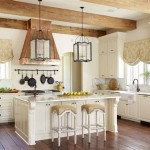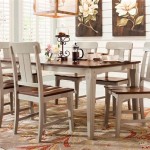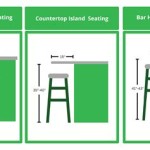Large Tiles For Kitchen Backsplash: A Comprehensive Guide
The kitchen backsplash serves a dual purpose: protection and aesthetics. It shields the wall behind the stove and sink from splashes, grease, and other kitchen hazards, while simultaneously contributing to the overall design and style of the space. While smaller tiles have been a traditional choice for backsplashes, large tiles are rapidly gaining popularity, offering a sleek, modern, and often more practical alternative. This article explores the application, benefits, considerations, and types of large tiles specifically for kitchen backsplash installations.
Large tiles, generally defined as tiles exceeding 12 inches on at least one side, provide a visually expansive and less interrupted surface. The fewer grout lines associated with larger tiles significantly change the aesthetic and maintenance requirements of a kitchen backsplash. This shift in design paradigm offers benefits for both contemporary and classically styled kitchens.
The evolution of manufacturing technologies has allowed for the production of large-format tiles in a variety of materials, including ceramic, porcelain, glass, and natural stone. This expanded selection enables homeowners and designers to achieve diverse looks, from minimalist modern to rustic traditional, while still leveraging the advantages of large tile formats.
Aesthetic Advantages of Large Tiles
Large tiles create a sense of spaciousness and continuity. The reduction in grout lines minimizes visual clutter, resulting in a cleaner, more streamlined appearance. This is particularly beneficial in smaller kitchens, where maximizing the perceived area is a key design goal. The eye is drawn to the overall tile pattern or texture rather than being distracted by a grid of grout lines.
The ability to mimic natural materials, such as marble or concrete, with large-format tiles offers a cost-effective alternative to using genuine materials. Advanced printing technologies allow manufacturers to replicate the intricate veining and textures of natural stone with remarkable accuracy, providing a luxurious aesthetic without the high cost and maintenance associated with the real thing.
Furthermore, large tiles can be used to create dramatic focal points. A single slab of tile, or a carefully arranged sequence of large tiles, can serve as a stunning backdrop for the cooktop or sink area. This allows for the incorporation of bold colors, intricate patterns, or unique textures to add personality and visual interest to the kitchen.
Practical Benefits of Large Tiles in the Kitchen
Beyond aesthetics, large tiles offer several practical advantages for kitchen backsplashes. The reduced number of grout lines translates to easier cleaning and maintenance. Grout is porous and susceptible to staining, mold, and mildew growth. By minimizing grout lines, the backsplash becomes more hygienic and easier to keep clean with regular wiping.
The installation process for large tiles can be faster than installing smaller tiles, depending on the complexity of the design and the experience of the installer. While large tiles require careful handling and precision cutting, the fewer number of pieces to install can accelerate the overall timeline. This is particularly advantageous for larger backsplash areas.
The durability of many large-format tiles, especially those made of porcelain, provides long-lasting protection for the wall behind the backsplash. These tiles are resistant to scratches, stains, heat, and moisture, making them ideal for the demanding environment of a kitchen. They offer a resilient barrier that can withstand the rigors of daily use.
Considerations when Choosing Large Tiles for Backsplash
Before selecting large tiles for a kitchen backsplash, several factors require careful consideration. The size and layout of the kitchen, the existing design elements, and the skill level of the installer all play a crucial role in the success of the project.
The size of the tiles should be proportionate to the size of the backsplash area. Using excessively large tiles in a small kitchen can overwhelm the space and make it feel smaller. Conversely, using small tiles in a large kitchen may not achieve the desired visual impact. A balance must be struck to ensure that the tiles complement the overall proportions of the room.
The existing design elements of the kitchen, such as the cabinetry, countertops, and flooring, should be considered when selecting the color, pattern, and texture of the backsplash tiles. The backsplash should complement these elements and contribute to a cohesive design scheme. Consider how the tile will interact with the light in the kitchen, as this can affect its appearance. Matte finishes may absorb light, while glossy finishes reflect it, influencing the overall brightness and ambiance.
Professional installation is generally recommended for large tiles, especially for complex designs or challenging spaces. The weight and size of the tiles require specialized tools and techniques, and precise cutting and alignment are essential for a flawless finish. An experienced installer can ensure that the tiles are properly adhered to the substrate and that the grout lines are consistent and even.
The cost of large tiles, including materials and installation, can be higher than that of smaller tiles. Larger tiles often require more specialized cutting and installation tools, as well as potentially more labor. However, the long-term benefits of reduced maintenance and increased durability may offset the initial cost in the long run.
Types of Large Tiles Suitable for Kitchen Backsplashes
A variety of materials are available for large-format kitchen backsplash tiles, each offering unique characteristics and aesthetic appeal. These materials include ceramic, porcelain, glass, and natural stone, as well as engineered stone options.
Ceramic tiles are a popular choice due to their affordability, versatility, and wide range of colors and patterns. They are relatively lightweight and easy to cut, making them suitable for various backsplash designs. However, ceramic tiles are less durable and more porous than porcelain tiles, making them more susceptible to staining and cracking.
Porcelain tiles are a more durable and water-resistant option compared to ceramic tiles. They are fired at higher temperatures, resulting in a denser and less porous material. Porcelain tiles are ideal for kitchens due to their resistance to stains, scratches, heat, and moisture. They are available in a wide range of styles, including those that mimic natural stone.
Glass tiles offer a sleek, modern aesthetic and are available in a variety of colors, shapes, and sizes. They are non-porous and easy to clean, making them a practical choice for kitchen backsplashes. Glass tiles can be translucent or opaque and can be used to create unique visual effects. However, glass tiles can be more expensive than ceramic or porcelain tiles, and they may require specialized installation techniques.
Natural stone tiles, such as marble, granite, and travertine, offer a luxurious and timeless appeal. Each tile is unique in its veining and texture, adding character and sophistication to the kitchen. However, natural stone tiles are more porous than other materials and require regular sealing to prevent staining. They are also generally more expensive and require specialized care and maintenance.
Engineered stone, such as quartz, offers a durable and low-maintenance alternative to natural stone. It is non-porous, scratch-resistant, and available in a wide range of colors and patterns. Engineered stone tiles can mimic the look of natural stone without the high cost and maintenance requirements. They are a popular choice for modern kitchens due to their sleek appearance and ease of care.
The grout selection for large format tiles is as important as the tile itself. Epoxy grouts are often recommended due to their stain resistance and durability. They are more expensive, but the decreased maintenance makes them worthy of consideration. The color of the grout is also important. Matching the grout to the tile reduces the visual impact of the grout lines, enhancing the seamless look of the large format tile.
In conclusion, large tiles offer a compelling alternative to traditional smaller tiles for kitchen backsplashes. They provide a sleek, modern aesthetic, easier maintenance, and increased visual impact. Careful consideration of the kitchen size, existing design elements, and installation requirements is essential for a successful project. By selecting the right type of tile and ensuring proper installation, homeowners can create a stunning and functional backsplash that enhances the beauty and value of their kitchen.

Large Format Tile Kitchen Backsplash

Choosing A Stunning Backsplash For Your Kitchen Neil Kelly

Backsplashes Big Tile Vs Small Gallery 77

The Best Kitchen Backsplashes For Your Home 52 Ideas

12 Large Tile Kitchen Splashback Ideas Tiles

5 Of The Best Kitchen Tile Splashback Ideas

Large Format Tile In Small Spaces

65 Kitchen Backsplash Ideas For Every Design Style In 2025
10 Fashionable Kitchen Backsplash Ideas Floor Decor Blog

Using Large Format Tiles As Splashbacks And Creating A Premium Feel








